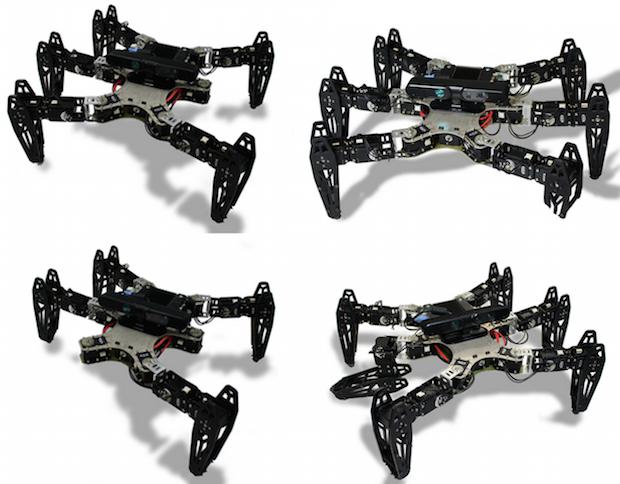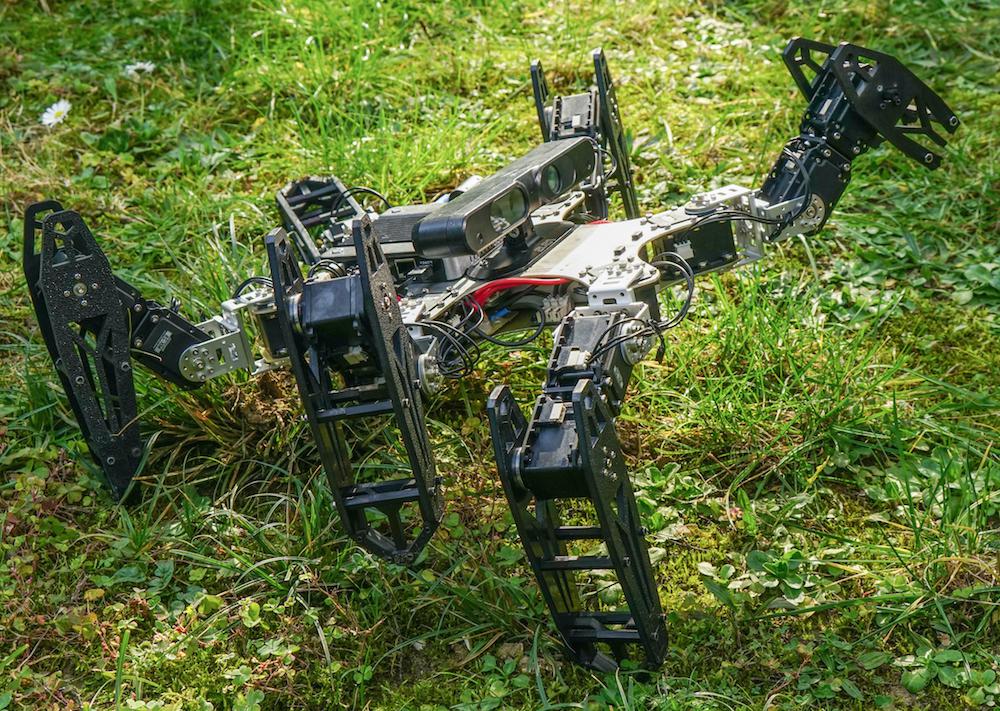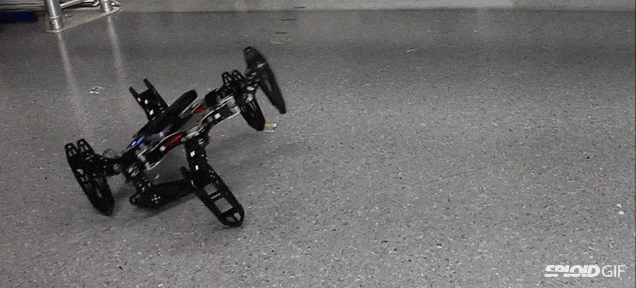Over the past three years, we have watched the growing sorrows of the hexapod robots made by Antoine Cully and Jean-BapTIste Mouret, and always lacked arms and broken legs. But by using very clever algorithms, it has been proven to get the robot out of damage and restore its mobility in a matter of minutes, even if you cut off one leg.
Now, this research has been unveiled in the journal Nature, which is a very important advancement, with some updates, and even more potential applications in the future. Cully and Mouret from the French Pierre and Marie Curie University report that their research found that they can be used not only for robots that use foot walking, but also for robots with new shapes, such as flat robotic arms. This shows that this algorithm is very flexible and should be applied to any form of robot as long as it has enough freedom to achieve adaptive motion.
The uniqueness of this approach is not just its versatility, but also the speed of its execution. Suppose there is a hexapod robot equipped with such adaptive skills. If you accidentally step on one of its feet, it will react quickly and re-select the most efficient way to move. From this point of view, the robot will not fall into chaos, but will detect that the leg is broken, what is the situation. Then the robot will "smart trial and error" through a lot of gait behavior, and then choose the most effective motion mode from the preset gait schemes within two minutes. Their press release reads:
“Once the robot is damaged, it becomes a scientist. It has an early expectation for different possible behaviors, and then it will test them. However, these predictions come from simulated, undamaged robots. So injured The robot also needs to find a way to be effective when the display is damaged. Each of its behavioral attempts is like an experiment, and if one of the behaviors does not work, then the robot can rule out this behavior and try new ones. For example, if the robot does not work well when walking on the hind foot, it may try to use the forefoot as much as possible. What is shocking is that they can quickly learn new ways of exercising. It’s really amazing that the abducting robot started moving efficiently two minutes later."
Damage recovery is not the only use of this algorithm, it can also be used in robots where terrain is unstable, sudden situation processing, etc. Because these are happening automatically, and the robot can continue to learn new behaviors, which will greatly help the exploration of alien planets in the future. Because it is inevitable to encounter difficult terrain or unexpected emergencies when exploring the outer planet, it is only necessary for the robot to take action on its own, without the need for human remote delay remote assistance. To be honest, the current consideration of using this technology for planetary exploration in extreme environments is too optimistic, because even on Earth, robots are constantly collapsing. If they really can rely on themselves, our work is much simpler.

The hexapod robot encountered several damages
Some additional information was mentioned in this article published in Nature, including some things that surprised them during the project development process, which is definitely worth reading:
“Two years ago, several well-known scientists were coming to visit. Because our university hoped that it would look great, we waxed the floor one day before the tour. Then the floor became very clean and Very shiny, looks good, but it's slippery! We have specially adjusted the gait of the robot and tested it many times to make sure our performance is successful, but it didn't work at all. Fortunately, our robots know how to adapt! Loading our adaptive algorithm, a few minutes later, our robots were able to walk on the slippery floor. Of course you guessed that our visitors liked our work.
There is another surprising thing: in order to create a diversity of behaviors, we use evolutionary algorithms to get different ways of walking. We choose from many different types of walking methods to measure the percentage of time that the robot's feet touch the ground (100%, 75%...25%, 0%). We take it for granted that evolutionary algorithms certainly cannot solve the 0% problem, but we are shocked! Our robot turned over and then propped forward with the elbows! â€
Sure enough, it is a very interesting story.


Although their project failed to reach the cover of Nature, the study is not over yet. At least their research and development funding can be supported until 2016, and their goal is not only hexapod robots and robotic arms, they are already promoting their algorithms to wheeled robots, and will continue to be used in a variety of robots. Advance this algorithm. It should be able to work in all robot systems. Specifically, their goal is to implement the kind of robot for disaster relief operations at the DARPA Robot Challenge.
It is too strong!
Customizable Adapters,Custom Power Adapters,Customizable Usb Adapters,Thunderbolt Otg Adapter Cable
Dongguan Pinji Electronic Technology Limited , https://www.iquaxusb4cable.com
